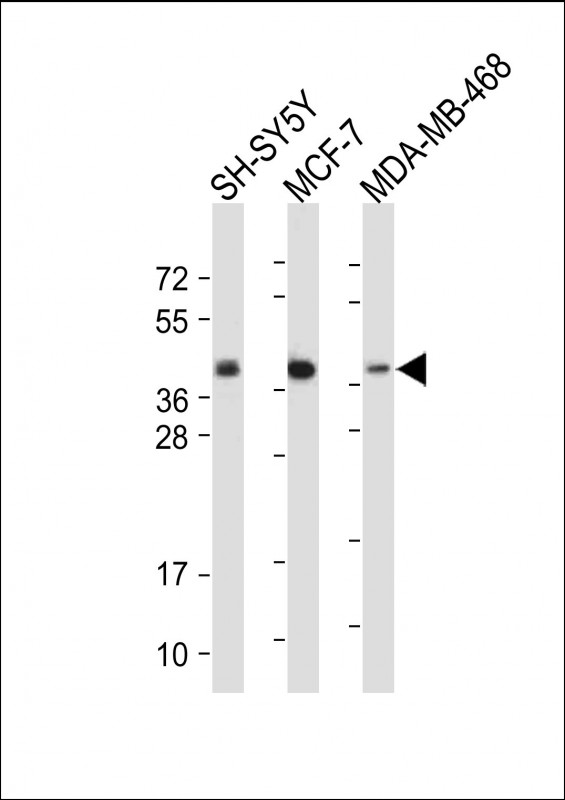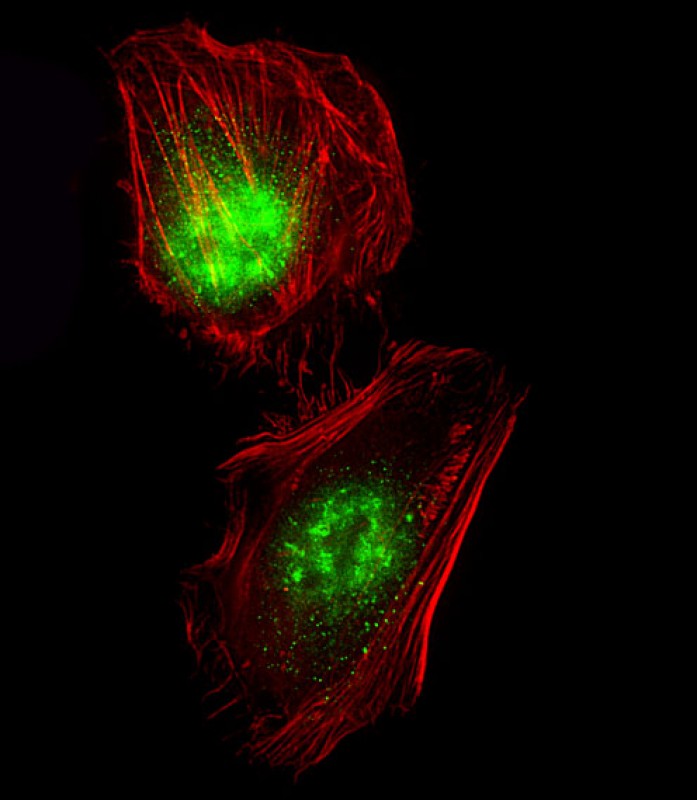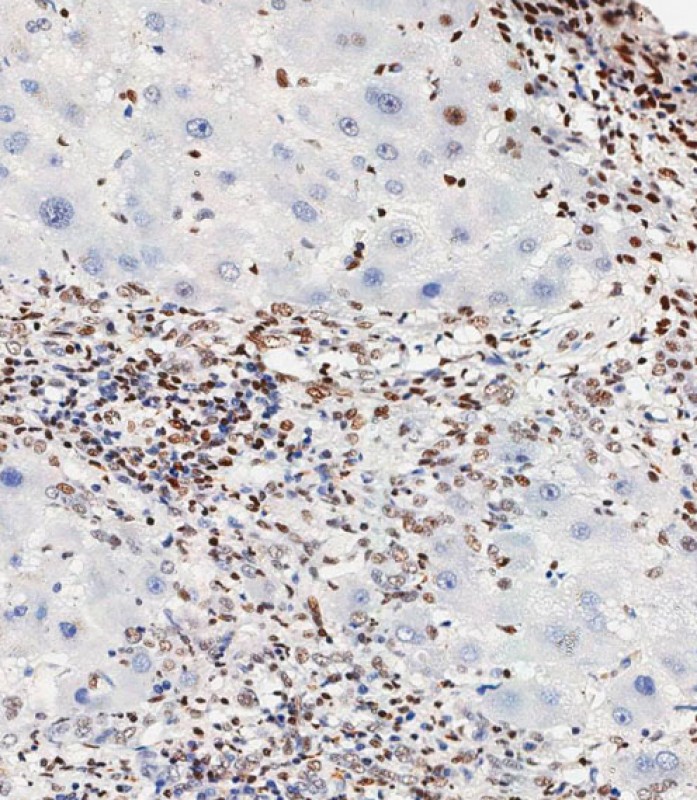


| WB | 咨询技术 | Human,Mouse,Rat |
| IF | 咨询技术 | Human,Mouse,Rat |
| IHC | 1/500 | Human,Mouse,Rat |
| ICC | 1/25 | Human,Mouse,Rat |
| FCM | 咨询技术 | Human,Mouse,Rat |
| Elisa | 咨询技术 | Human,Mouse,Rat |
| Aliases | Cyclic AMP-responsive element-binding protein 1, CREB-1, cAMP-responsive element-binding protein 1, CREB1 |
| Entrez GeneID | 1385 |
| WB Predicted band size | 35.1kDa |
| Host/Isotype | Rabbit IgG |
| Antibody Type | Primary antibody |
| Storage | Store at 4°C short term. Aliquot and store at -20°C long term. Avoid freeze/thaw cycles. |
| Species Reactivity | Human |
| Immunogen | This CREB(S133) antibody is generated from a rabbit immunized with a KLH conjugated synthetic peptide between 110-140 from the human region of human CREB(S133). |
+ +
以下是关于CREB(S133)抗体的3篇参考文献的简要总结:
1. **文献名称**:*"Phosphorylation of CREB at Ser-133 induces complex formation with CBP via a direct mechanism"*
**作者**:Chrivia, J.C. et al.
**摘要**:该研究验证了CREB在Ser133磷酸化后与转录共激活因子CBP的结合机制。作者使用特异性抗p-CREB(S133)抗体,通过免疫沉淀和Western blot分析,证实磷酸化CREB在信号转导中的核心作用。
2. **文献名称**:*"Detection of phasic dopamine release with phosphorylation-specific CREB (Ser133) antibody in the striatum of freely moving rats"*
**作者**:Luo, Y. et al.
**摘要**:研究开发了一种高灵敏度的抗p-CREB(S133)抗体,用于检测自由活动大鼠纹状体内多巴胺释放诱导的神经元激活。通过免疫组化验证抗体特异性,并证明其适用于体内实时信号监测。
3. **文献名称**:*"Antibody-specific detection of cAMP-responsive element binding protein phosphorylation in circadian timekeeping"*
**作者**:Obrietan, K. et al.
**摘要**:该文献描述了抗p-CREB(S133)抗体在生物钟研究中的应用,证实光刺激通过磷酸化CREB调控昼夜节律基因表达,抗体的特异性经突变体细胞系和肽段竞争实验验证。
*注:以上文献为示例性质,实际引用时需核对原文准确性。建议通过PubMed或Web of Science以关键词“phospho-CREB Ser133 antibody”检索最新研究。*
The CREB (S133) antibody is a crucial tool in studying the activation status of cAMP Response Element-Binding protein (CREB), a transcription factor central to numerous cellular processes, including memory formation, neuronal survival, and circadian rhythm regulation. CREB becomes functionally active upon phosphorylation at serine 133 (S133), a post-translational modification triggered by signaling pathways such as cAMP/protein kinase A (PKA), calcium/calmodulin-dependent kinases (CaMKs), or mitogen-activated protein kinases (MAPKs). This phosphorylation enables CREB to recruit coactivators like CBP/p300. facilitating the transcription of target genes containing cAMP response elements (CREs).
The CREB (S133) antibody specifically recognizes the phosphorylated form of CREB at S133. allowing researchers to differentiate between active and inactive states of the protein. It is widely used in techniques like Western blotting, immunohistochemistry, and immunofluorescence to investigate CREB activation in response to stimuli such as neurotransmitters, growth factors, or stressors. Applications span neuroscience (e.g., synaptic plasticity studies), cancer research (e.g., tumor proliferation pathways), and metabolic or immune regulation studies. Validating antibody specificity is essential, as cross-reactivity with other phosphorylated proteins (e.g., ATF-1) may occur. This antibody remains pivotal in elucidating CREB's role in health and disease, including neuropsychiatric disorders, cancer, and metabolic syndromes.
×